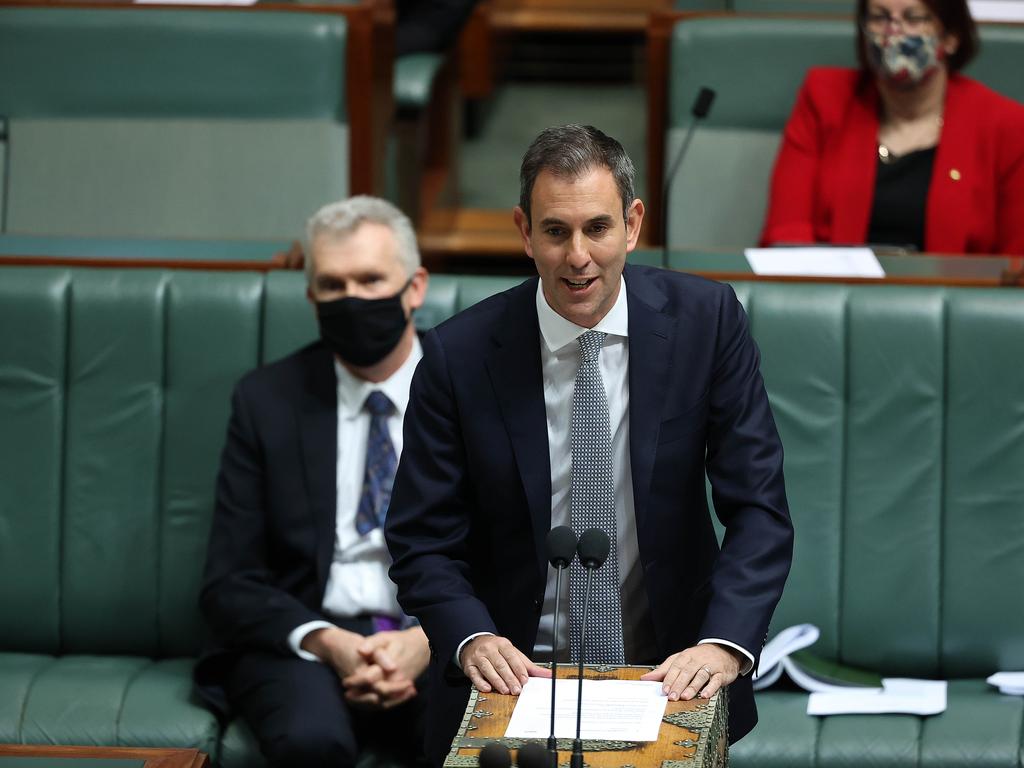Hot housing market increases risk of crash, says IMF
The International Monetary Fund has urged Australia to toughen lending standards to take the heat out of the property market.

Runaway residential property prices could threaten the stability of Australia’s financial system and need to be reined in, the International Monetary Fund says.
That warning, delivered in the IMF’s first financial health check of the economy since the start of the Covid-19 pandemic, follows rising local concerns about the threat that high household debt and surging house prices pose.
The IMF, in a report released on Friday, said regulators should consider tighter lending controls on overstretched homebuyers – a move the country’s major banks fiercely resist.
IMF Australia mission chief Harald Finger said a “comprehensive policy response” was needed to deal with our booming property market, which was exposing vulnerabilities in the financial system and making it harder for people to buy a home.
“Macro-prudential policy should be tightened to address gradually rising financial stability risks,” Mr Finger said.
He suggested the need for debt-to-income ratio or loan-to-value ratio caps on mortgage lending. Planning reforms could improve housing supply and affordability, as would infrastructure provision to address scepticism about new development, Mr Finger said.
The IMF has also warned that Australia’s tax system is too reliant on personal income and company taxes, recommending the rate and coverage of the GST be increased instead. Concerns about the rapid increase in home prices have also been raised by Commonwealth Bank chief executive Matt Comyn, who told a parliamentary inquiry on Thursday that modest action to control price growth should be taken “sooner rather than later”.
“It is much harder to act when the market is accelerating versus taking interventions to try to avoid too much of an acceleration,” Mr Comyn said.
Despite the pandemic, and strict restrictions in Sydney and Melbourne, property prices have continued to grow rapidly. According to the latest CoreLogic data, released earlier this month, Sydney home prices have jumped by 20.9 per cent over the past 12 months. In that time, residential values in Melbourne and Brisbane have increased by 13.1 per cent and 18.3 per cent, respectively.
While health restrictions have led to a decrease in the supply of properties for sale, CoreLogic predicts the spring selling season will begin to boost the number of homes brought to market.
The Council of Financial Regulators, which promotes financial stability and is chaired by the Reserve Bank, met on Friday and will publish its quarterly statement next week against a backdrop of louder pleas to cool an overheated property market.

Australia’s financial watchdogs see high household debt as a risk to the broader economy and banking system if home prices drop or borrowers lose their jobs.
Under the global financier baseline scenario, GDP is forecast to grow by 3.5 per cent this year and 4.1 per cent next year, suggesting lockdowns will take a deeper bite out of economic activity than foreshadowed this week by the OECD.
Once temporary support payments for business expired, the IMF said, more firms would fail and the closure of international borders would limit migration and restrain Australia’s potential output over the coming decade. The IMF said underlying inflation would rise to 2 per cent by the end of next year and remain within the RBA’s target of 2 to 3 per cent. On this projection, the central bank would lift its cash rate before its guidance of “not before 2024”.
With ultra-low borrowing rates fuelling rising property prices, monetary authorities have resisted rate rises or imposing so-called macro-prudential controls on lenders. Instead, the RBA has repeatedly said it is closely watching developments in lending.
In a speech on Wednesday, RBA assistant governor Michelle Bullock said that, given the sharp increase in housing prices and housing debt, risks to financial stability could be rising. “A high level of debt could pose risks to the economy in the event of a shock to household incomes or a sharp decline in housing prices,” she said.
“It is these macro-financial risks that warrant close watching. Whether or not there is need to consider macro-prudential tools to address these risks is something we are continually assessing”.
The IMF’s latest assessment was more direct, telling authorities macro-prudential policy should be tightened and lending standards closely monitored. “While the surge in housing prices has been driven largely by owner-occupiers taking advantage of low mortgage rates and fiscal support programs, high debt-to-income mortgages are on the rise amid elevated household debt, and investor demand has begun to increase from low levels,” the IMF’s communique said.
“Lending standards should be monitored closely, and macro-prudential measures should be employed to address incipient risks. Options include increasing interest serviceability buffers and instituting portfolio restrictions on debt-to-income and loan-to-value ratios”.
On monetary policy, the IMF said there was still space for the central bank to provide additional support by “expanding its asset purchases, reinstating term funding facilities, lengthening the maturity of the yield target, and/or introducing negative rates”.
As well, the biannual report provided a nudge for Australia to adopt a market mechanism and a net-zero emissions target by 2050. Setting a “time-bound net zero emissions” objective would help boost investment in the transition towards a clean energy future.
“While politically challenging, implementing broadbased carbon pricing, along with measures to mitigate transition risks for impacted industries and regions, would be the most effective way to achieve emissions reductions and complement the investment strategy,” the IMF said.








To join the conversation, please log in. Don't have an account? Register
Join the conversation, you are commenting as Logout